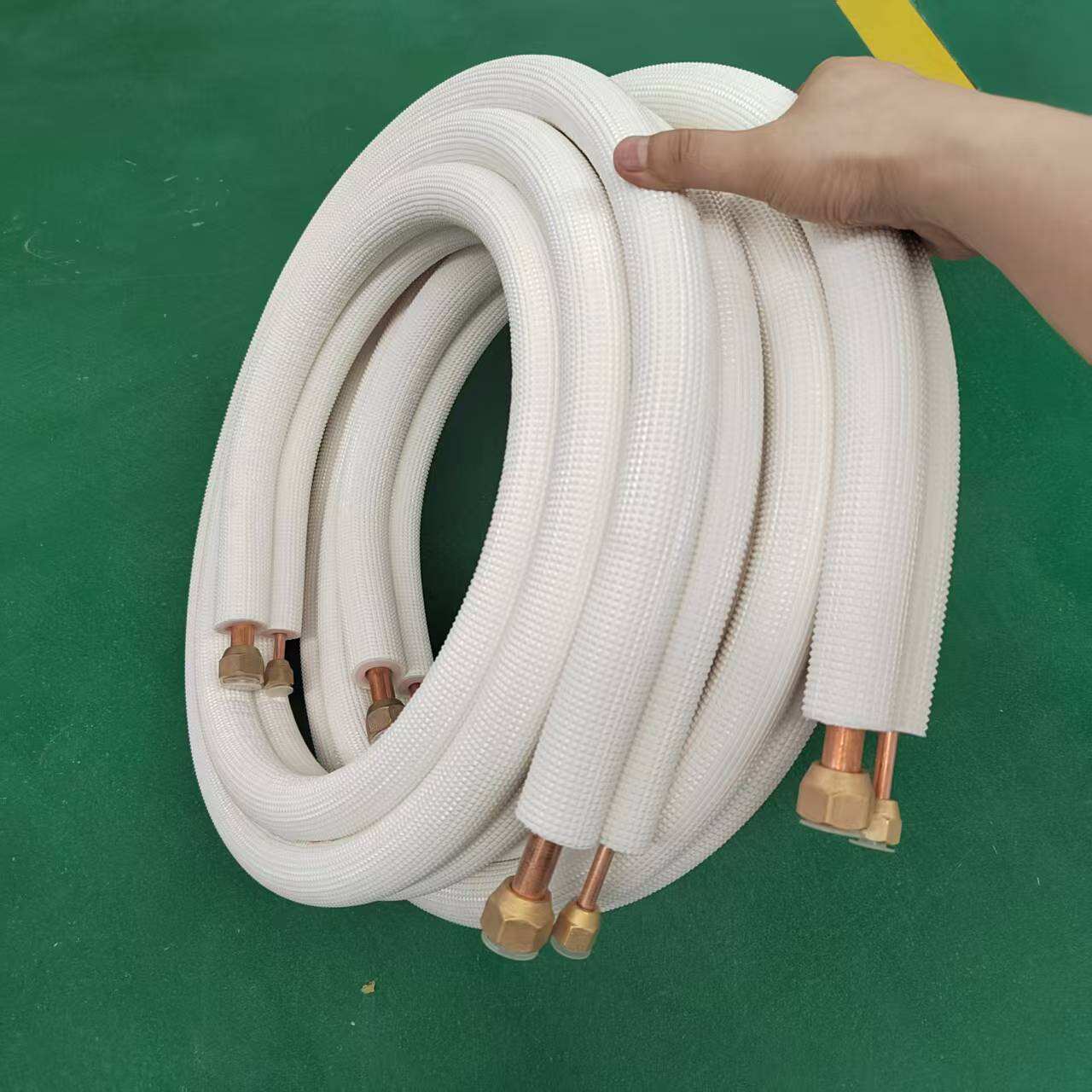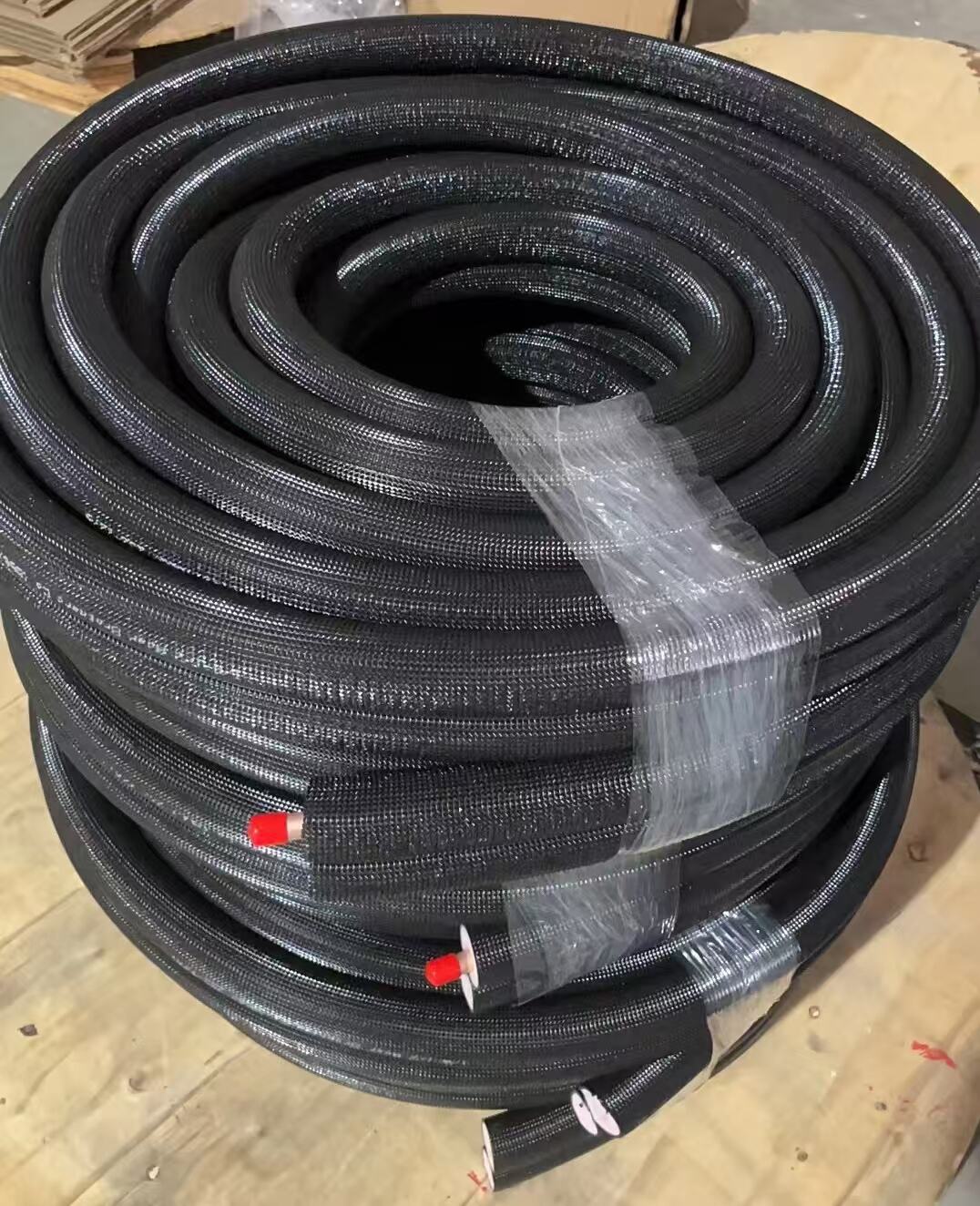Understanding the Critical Role of Line Sets in HVAC Performance
The efficiency and performance of any HVAC system heavily depend on its components working in perfect harmony. Among these components, the HVAC line set size plays a crucial role in determining the overall cooling capacity and system effectiveness. These copper lines serve as the vital pathways through which refrigerant flows between the indoor and outdoor units, making them fundamental to the heat transfer process.
When professionals design HVAC systems, they must carefully consider the line set dimensions to ensure optimal performance. An incorrectly sized line set can lead to significant efficiency losses, reduced cooling capacity, and potential system damage. The relationship between HVAC line set size and cooling capacity is both complex and fascinating, involving principles of thermodynamics, fluid dynamics, and heat transfer.
The Science Behind HVAC Line Sets
Refrigerant Flow Dynamics
The movement of refrigerant through HVAC line sets follows specific physical principles. The liquid line carries high-pressure liquid refrigerant to the indoor unit, while the suction line returns the vaporized refrigerant to the outdoor unit. The HVAC line set size directly impacts the refrigerant's velocity, pressure drop, and oil return capabilities.
When the line set is properly sized, it maintains the ideal refrigerant velocity needed for efficient operation. Too small a diameter restricts flow and creates excessive pressure drop, while oversized lines can lead to sluggish refrigerant movement and poor oil return.
Heat Transfer Efficiency
The diameter of HVAC line sets significantly influences the system's heat transfer capabilities. Optimal sizing ensures proper refrigerant charge and distribution throughout the system. This balance is essential for maintaining the designed cooling capacity and achieving maximum efficiency in heat exchange processes.
The surface area of the copper tubing, determined by its diameter, affects how effectively heat can be transferred between the refrigerant and the surrounding environment. This becomes particularly important in longer line set runs where heat gain or loss can impact system performance.
Impact of Line Set Sizing on System Performance
Capacity Loss Factors
Incorrect HVAC line set size can lead to substantial capacity losses. When lines are undersized, the restriction of refrigerant flow creates higher pressure drops, forcing the compressor to work harder and reducing overall system efficiency. This not only diminishes cooling capacity but also increases energy consumption and operating costs.
Studies have shown that even a slight deviation from recommended line set sizes can result in capacity losses of up to 10-15%. In commercial applications, where cooling demands are higher, the impact can be even more significant, potentially leading to thousands of dollars in additional energy costs annually.
System Reliability and Longevity
The relationship between HVAC line set size and system reliability cannot be overstated. Properly sized line sets promote optimal oil return, preventing oil accumulation in the system. This is crucial for protecting the compressor, often considered the heart of the HVAC system.
When line sets are correctly sized, they help maintain proper refrigerant velocities, reducing the risk of liquid slugging and ensuring smooth operation. This contributes to extended equipment life and fewer maintenance issues over time.

Professional Guidelines for Line Set Sizing
Calculation Methods
HVAC professionals employ specific calculations to determine the appropriate line set size for each installation. These calculations take into account factors such as system capacity, refrigerant type, line length, and elevation differences between indoor and outdoor units. Advanced software tools now assist in these calculations, ensuring greater accuracy in sizing decisions.
The process involves evaluating pressure drop limitations, minimum velocity requirements for oil return, and maximum velocity constraints to prevent excessive noise and vibration. Each manufacturer provides detailed specifications that must be carefully followed for optimal performance.
Installation Best Practices
Proper installation techniques are just as important as correct sizing when it comes to HVAC line sets. Professional installers must ensure proper support, insulation, and routing of line sets to maintain system efficiency. This includes maintaining appropriate bend radii, securing lines properly, and protecting them from physical damage.
The installation process must also account for thermal expansion and contraction, proper brazing techniques, and thorough leak testing. These practices help ensure that the chosen line set size can deliver its intended performance benefits.
Common Line Set Sizing Challenges
Long Line Set Runs
Extended line set runs present unique challenges in HVAC system design. As the distance between indoor and outdoor units increases, the impact of line set size becomes more critical. Longer runs require careful consideration of pressure drops and oil return capabilities, often necessitating larger line sizes than standard installations.
Professionals must account for additional refrigerant charge requirements and potential capacity losses in long-run applications. This may involve implementing specialized design solutions such as double risers or oil traps to maintain system performance.
Multi-Zone Systems
Multi-zone HVAC systems add another layer of complexity to line set sizing. These installations require careful balance of refrigerant distribution among multiple indoor units, making proper line sizing even more critical. Each branch circuit must be sized appropriately to ensure equal distribution of cooling capacity.
The design must account for varying load demands and operating conditions across different zones while maintaining proper refrigerant velocities throughout the system. This often requires sophisticated calculation methods and experienced professional judgment.
Future Trends in HVAC Line Set Technology
Advanced Materials and Design
The HVAC industry continues to innovate in line set technology. New materials and designs are being developed to improve efficiency and reduce installation complexity. These advancements include pre-insulated line sets, corrosion-resistant coatings, and quick-connect fittings that maintain optimal sizing while simplifying installation.
Research is ongoing into alternative materials that could offer better thermal properties and durability while maintaining or improving the relationship between line set size and system performance. These developments promise to enhance system efficiency and reliability further.
Smart Monitoring Systems
The integration of smart technology in HVAC systems now extends to monitoring line set performance. Advanced sensors and diagnostic tools can detect issues related to line set sizing and performance in real-time, allowing for proactive maintenance and optimization of system operation.
These technologies help maintain optimal system performance by alerting technicians to potential issues before they impact cooling capacity significantly. This predictive approach to maintenance is becoming increasingly important in modern HVAC installations.
Frequently Asked Questions
What happens if HVAC line sets are undersized?
Undersized HVAC line sets can cause multiple issues including reduced cooling capacity, increased energy consumption, higher operating pressures, and potential compressor damage. The system will work harder to maintain desired temperatures, leading to increased wear and higher utility costs.
Can HVAC line sets be too large?
Yes, oversized line sets can cause problems such as poor oil return, refrigerant velocity issues, and reduced system efficiency. Large line sets may also lead to refrigerant charge migration during off cycles and potential liquid slugging during startup.
How often should HVAC line sets be replaced?
HVAC line sets typically last 20-30 years if properly installed and maintained. However, replacement may be necessary sooner if there are signs of damage, corrosion, or when upgrading to a new system with different refrigerant requirements or capacity needs.




